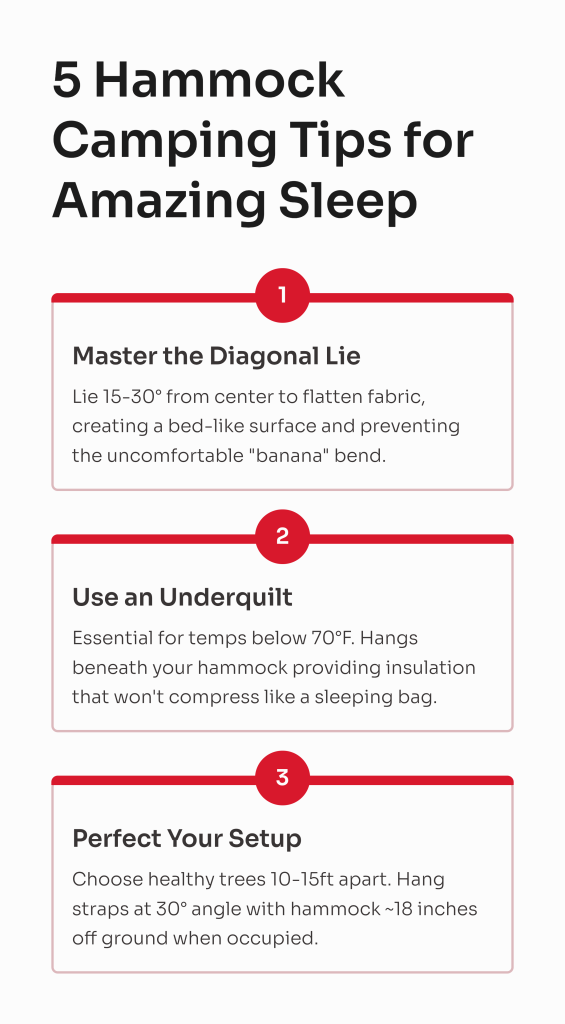Master the Art of Hammock Camping for a Restful Night
The allure of hammock camping is undeniable. The gentle sway, the fresh air, and the feeling of being suspended peacefully between two trees—it’s a unique and intimate way to experience the outdoors. However, many new hammock campers find their first few nights less than stellar, often waking up cold, with a sore back, or struggling to find that perfect, comfortable position. As an avid hammock camper who has spent countless nights hanging under the stars, I’ve learned that a truly great night’s sleep comes down to a few key principles. This guide is dedicated to showing you exactly how to get a good night’s sleep hammock camping, turning a potential struggle into a deeply restful experience.
From choosing the right gear to mastering the ideal setup, every detail contributes to your comfort and warmth. My own journey from a restless beginner to a serene sleeper taught me the value of proper technique and the right equipment. Forget what you think you know about lying flat; the secret to hammock comfort is all in the hang. By the end of this article, you will have the knowledge to create your own cozy nest, regardless of the weather, and wake up feeling refreshed and ready for your day’s adventure.
The Diagonal Lie: Your Key to Comfort
This is arguably the most important tip in all of hammock camping. Most beginners make the mistake of lying straight along the length of the hammock, which creates a “cocoon” effect, putting pressure on your back and shoulders. To achieve a flat, comfortable sleeping surface, you must lie on a diagonal.
When you enter your hammock, shift your body so that your head is on one side of the centerline and your feet are on the other. This simple adjustment flattens the hammock fabric, allowing you to lie almost as flat as you would in a bed. This technique is a game-changer for eliminating back pain and ensures you have a truly restful night. It’s the first step to unlocking the true potential of your hammock camping tips for beginners.
Essential Gear for Warmth and Weather Protection
The number one reason for a poor night’s sleep in a hammock is the cold. Even on a mild night, cold air circulating underneath you will cause significant heat loss. This phenomenon is known as “Cold Butt Syndrome.” Your sleeping bag is compressed underneath you, making it ineffective. The solution is an **underquilt**.
An underquilt is a piece of insulated camping gear that hangs underneath your hammock, providing a layer of protection from the cold air. Unlike a sleeping bag, it doesn’t compress, so the insulation remains fully effective.
A proper rainfly or tarp is also non-negotiable. It not only protects you from rain but also provides a crucial barrier against wind, helping to trap heat and keep you comfortable. For more comprehensive guides on selecting gear, visit our camping tips section.
Essential Hammock Gear:
- Hammock: A good-quality, lightweight hammock.
- Suspension Straps: Tree-friendly straps for a quick and easy setup.
- Rainfly/Tarp: A well-sized tarp for weather protection.
- Underquilt: The key to staying warm in cooler weather.
- Sleeping Pad (Alternative): In a pinch, a closed-cell foam pad can provide some insulation underneath you.
Choosing the Perfect Hang Angle and Location
The angle at which you hang your hammock is critical for comfort and stability. The “Sweet Spot” is a 30-degree angle between the suspension line and the tree. This angle ensures the right amount of sag, allowing you to lie diagonally without feeling constricted. A too-tight hang will create a stiff, uncomfortable cocoon, while a too-loose hang will make you sag to the ground.
When choosing your location, look for two healthy, sturdy trees that are roughly 12-15 feet apart. Avoid dead trees or branches that could fall. Also, scout the area for potential hazards like ant hills or poison ivy. It’s all part of ensuring a seamless and comfortable experience, vital for understanding how to get a good night’s sleep hammock camping. For more advanced techniques like wild camping, you can find a detailed guide here.

Final Tips for a Restful Night
A few final touches can make all the difference. Always carry a small pillow or a stuff sack filled with clothes for neck support. Remember to bring a light sleeping bag even with an underquilt, as it provides top insulation. Listen to your body and adjust your gear as needed. Finding your perfect hang takes practice, but the reward is an unparalleled night of rest.
By focusing on these core principles—the diagonal lie, essential gear, proper hang angle, and smart location choices—you can ensure your next camping trip is a dreamy, restorative experience. Happy hanging! For more expert-backed advice on all things camping and outdoor living, explore our homepage.

